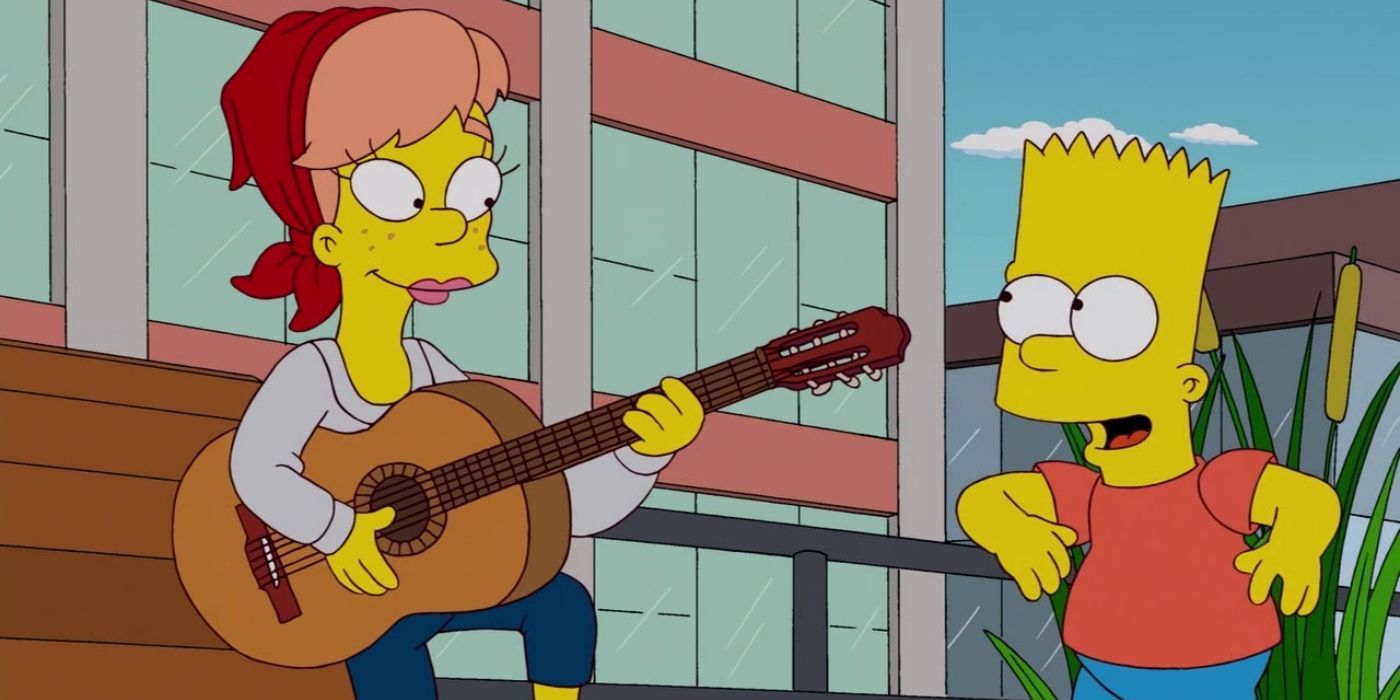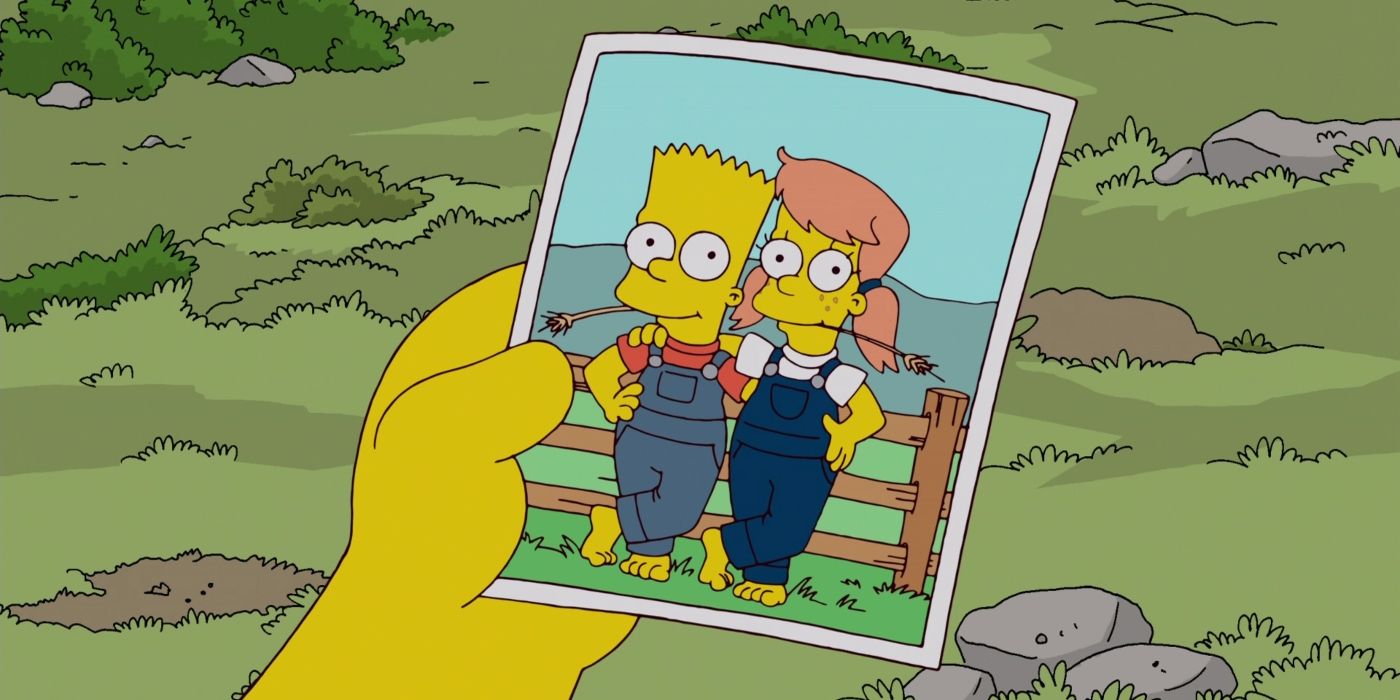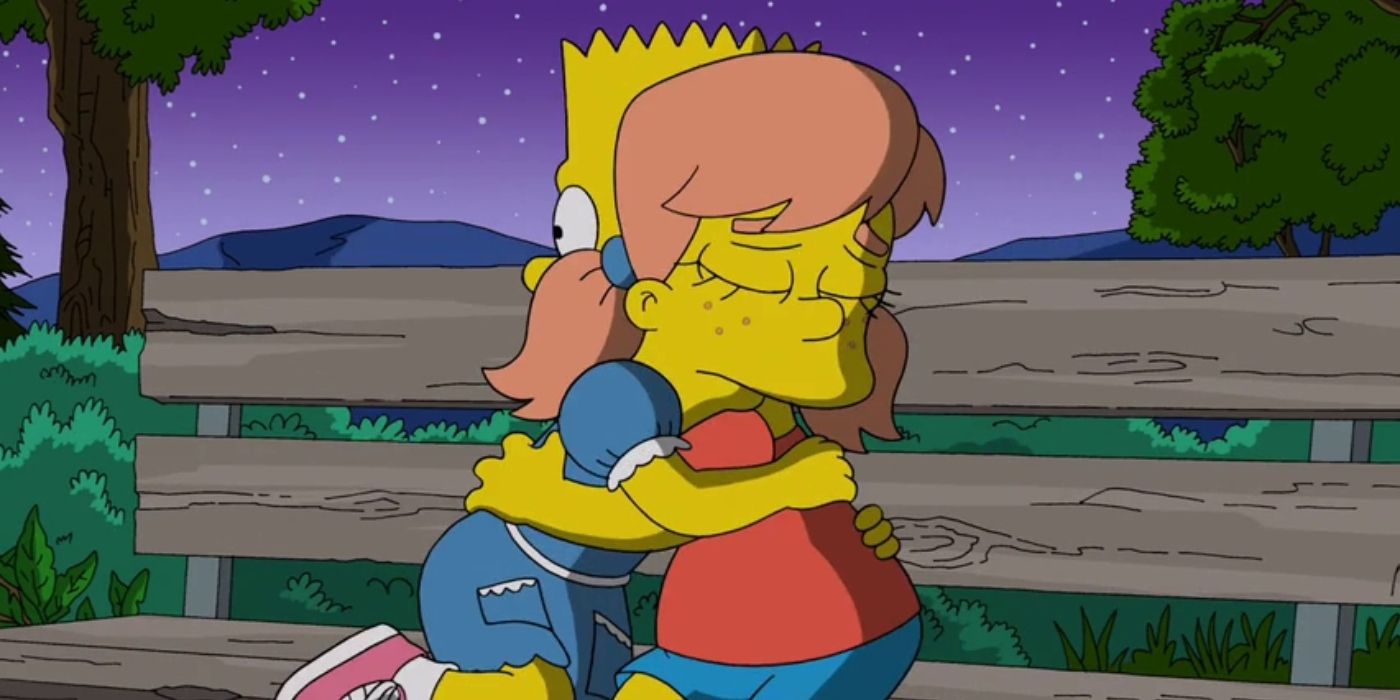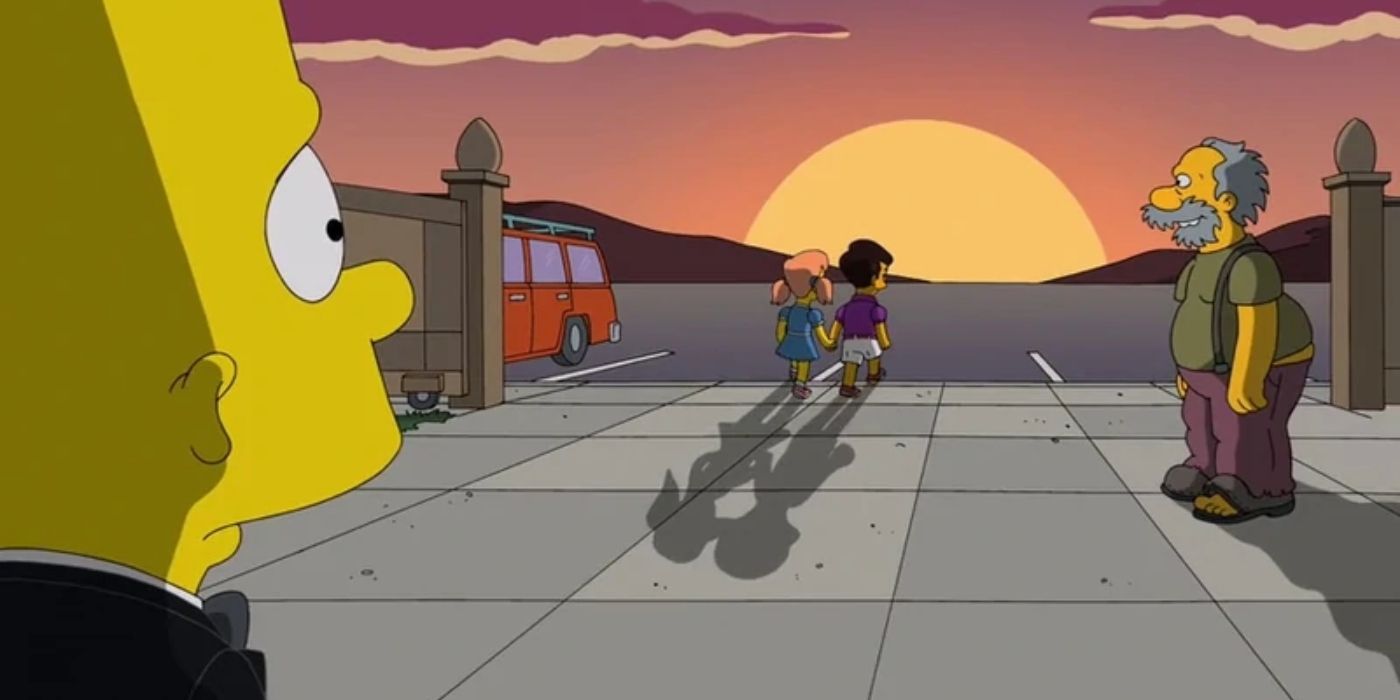The nature of The Simpsons is well-designed for roles that breeze into the animated world for one episode and disappear before the next plotline. But one of Bart's most important romantic relationships with Mary Spuckler was actually given multiple episodes to grow. Over the course of three episodes, Mary Spuckler transformed from a one-dimensional fling to a prominent minor character that ultimately helped Bart learn an important and bittersweet lesson in love.
Among the many guest stars that have appeared in The Simpsons, many are notable actresses who've cameoed as one-episode love interests for Bart Simpson, such as Meryl Streep as Jessica Lovejoy in Season 6, Reese Witherspoon as Greta Wolfcastle in Season 13, Sarah Michelle Gellar as Jenna in Season 15 and Amy Poehler as Jenda in Season 16. Most of these characters only appear in a single episode or -- like Jessica Lovejoy and Greta Wolfcastle -- occasionally show up in dialogue-free crowd shots.
But Mary Spuckler got far more than just a single episode to develop as a character. Mary was introduced in Season 19's "Apocalypse Cow." Mary and Bart meet when the latter briefly joins the 4-H club, and Bart enlists the farmer's daughter to help him care for his steer, Lou. When Lou is almost sent to a butcher, Bart gives the animal to Mary for safe-keeping -- unknowingly giving Mary's father Cletus a dowery. The two are nearly married before Marge manages to call the ceremony off. At the time, neither Bart nor Mary want to get married and aren't even attracted to one another.
However, Season 24's "Moonshine River" revealed that the pair gave a genuine romance a chance at some point off-screen. The two spent some time together before Mary left Springfield under mysterious circumstances. Finding out that she'd gone to New York City, the Simpson family visits the city to give Bart an opportunity to get closure. Discovering that Mary has ambitions to join the entertainment industry as a singer and an actress, Bart shares a romantic day with her. When they realize Cletus has followed them in an attempt to bring Mary back to Springfield, Bart helps her escape and shares a kiss with her before watching her leave the city. Bart even refuses to tell Cletus where she's going, saying that Mary is proof that Bart can actually be someone a girl can trust and fall in love with.
Mary ultimately returns to Springfield of her own accord in Season 25's "Love is a Many-Splintered Thing," revealing she'd grown to miss her family and Bart. The two formally begin a romance in the episode, but Bart quickly takes it for granted. He's not supportive of her musical efforts, ignores her wants and is blissfully unaware of how unhappy Mary has become in their relationship.
After meeting another charming, young man, Mary ends things with Bart, leaving him devastated. Although he takes the advice of various other men in Springfield -- including Homer -- and attempts a grand romantic gesture to win Mary back, it doesn't change her mind on their incompatibility, forcing Bart to sadly come to terms with the fact that he's not the hero in her story.
Mary and Bart's story-arc is one of the handfuls of times that The Simpsons has engaged in long-term storytelling. Season 6's "Who Shot Mr. Burns?," Season 28's "The Great Phatsby" and Season 31's "Warrin' Priests" were two-parters that happened in synch and told a longer singular story. But the length afforded to Mary and the unique roles she had in each episode -- a simple friend at first, an idealized love interest second, and a real young woman with her own hopes and dreams in the third -- gave Mary her own definite development and growth as a character. Her time with Bart changed her as well as him and left a clear impression on how she acted around Bart and others. Instead of being like any other throw-away character, Mary felt more fully realized and actually impacted Bart as a character.
Mary got to be Bart's first genuine run-in with love, which took his childish ideas about romance that occurred in his other brief relationships and replaced them with more honest and bittersweet moments, such as Mary hugging Bart as she ended things. The episode is grounded in silly antics but with an emotional and genuine perspective that teaches Bart an important lesson along the way -- with the final moment of "Love is a Many-Splintered Thing" even hinting that Bart and Mary could rediscover each other years later.
The Mary storyline allowed a deep look into Bart, a character that's largely been the same since the show began in 1989. Other multi-part episodes like "The Great Phatsby" and "Warrin' Priests" prove The Simpsons is still capable of strong character-centric storytelling, even three decades later.




